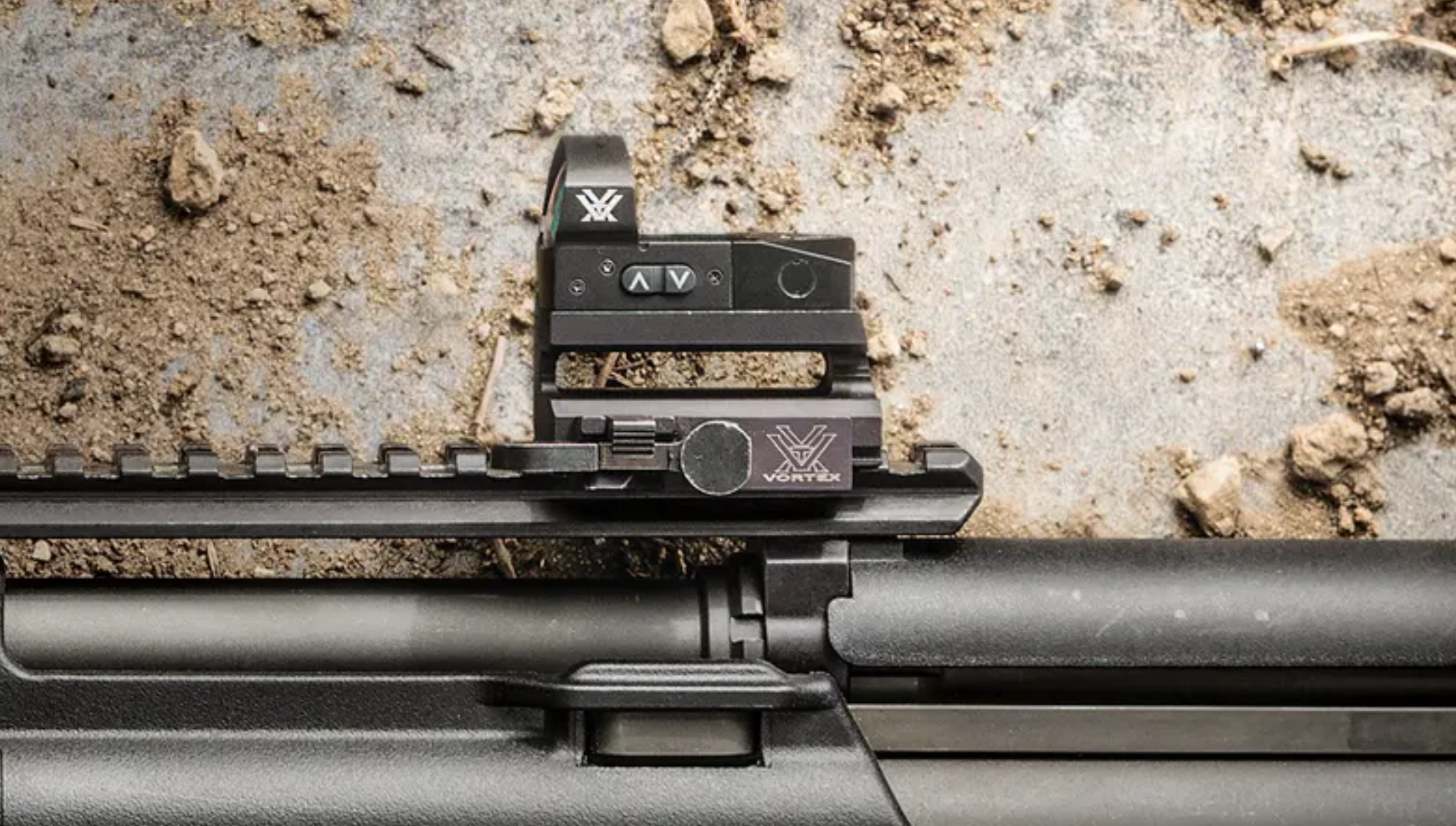

For example, a red dot of 2 MOA is smaller in size than a red dot of 6 MOA. MOA stands for “minutes of angle.” This has to do with the size of the dot and how much it will cover at a certain distance. The position of the mirror allows the viewer to see a red dot when aiming for their target, but a red dot cannot be seen from looking in on the other side, meaning it will not scare away animals because no light is given off. The LED light consumes very little energy, allowing red dots to last hundreds or even tens of thousands of hours, depending on the brightness setting. This allows you to easily see where you are aiming against darker backgrounds, or in the woods where it’s green. This mirror has a specific coating that only allows red light to pass through-hence the name “red dot” sight. A red dot is composed of a tilted spherical mirror that reflects the red LED. This allows the red dot reticle to stay in alignment of your gun regardless of eye position.

A reticle is a dot or a line on an optical device (such as red dots, scopes, etc.) that are used as a measuring scale and help locate objects. Red dots are exactly how they sound, having a red dot as the reticle when you look through this device. They are extremely easy to use and can assist first-time shooters with more simplified aiming. Smaller works better for me on Pendulum and Outer Limits.Red Dot Sights First Things First: What is a Red Dot Optic?Ī red dot sight is a type of optic that is typically used at closer ranges, normally around 100 yards or less. I change to an 8 sometimes just to try it out again, and I always notice that even though the dot is smaller, it seems more precise, and just as bright as the 12 moa. I usually shoot a 12 in my C-more, while my adult daughter prefers an 8. My 59 year old eyes don't see the tiny dots too well these days, but I can see 6-12 easily enough. I'm not certain that bigger is always better.

I have a 6.5 RMR, auto adjust dot only, on my SW CORE (B Class there in CO) and it seems to work well. but if the dot overpowers the target you can get a miss, and add time to what should be a smooth run.

I expect that I might climb into A Class with it.īig dots are easy to find. and feel much more positive and flowing with that 8 MOA medium power setting. I'm only a B Class shooter right now, but I have run 3.09 on Five To Go and 2.98 on Accelerator. One practice stage (Pendulem) I turned the dot down to mid power (two clicks down).What a difference! Still had 8 MOA dot, but now sharply defined on distant 10-12 inch plates. I shot it many times with the dot set at "auto setting" (first hit on the switch) It seemed to 'bloom' a bit on me outdoors, and especially on 10-12 inch plates at 20 yards, and I didn't feel 'solid' with the bloom. I have a Burris FFIII 8 MOA on my S&W Victory RFPO gun. Sounds like something bigger than a 8 moa dot is the way to go. Also a known optical eye phenomenon is a bigger dot looks to your brain like it is wiggling less than a small one. Also in stages like S&H where you often point shoot most of the plates the bigger dot is still visible in your brain as you pass over the plates so you know where it is in relation to where your barrel is pointing. For one thing if you have any astigmatism a larger dot will be much rounder than a smaller dot so getting off center is not as much of a problem due to seeing a misshapen dot using a smaller one. But for steel I turn it up high but not to the flaring point. For some events I turn the power down till the dot is just past bright and almost transparent. I tried that and did not like the flared out dot it created. Robby Orent told me many years ago he just used 8 MOA and turned it up to max. That is one reason why I listened to my buddy Mike S and went to the big dots he has been using for years.


 0 kommentar(er)
0 kommentar(er)
